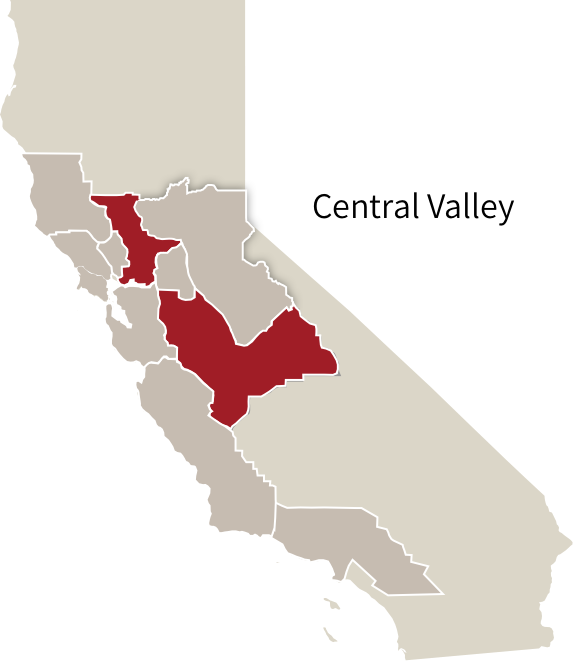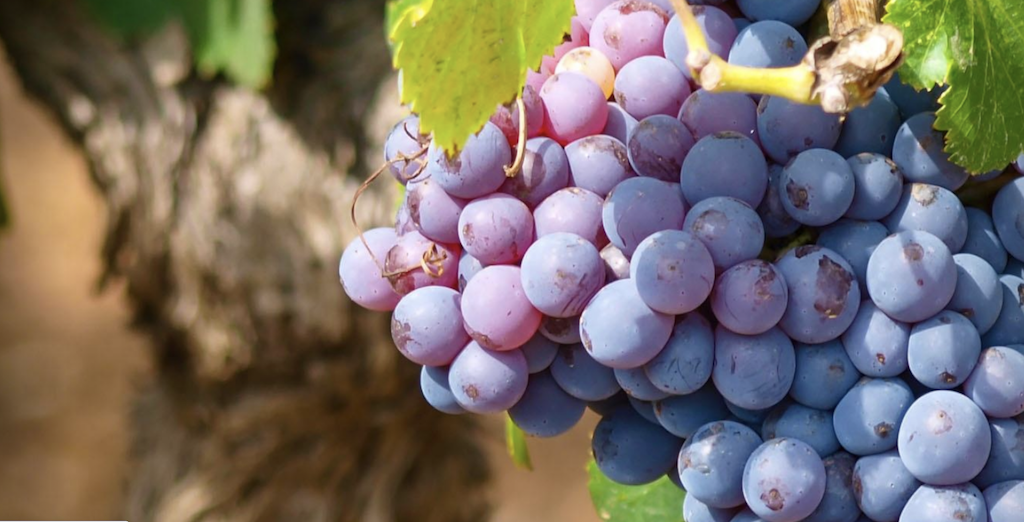Centuries of Sierra Silt
Technically speaking, the Inland Valleys are, in fact, two valleys: the Sacramento Valley in the north and the San Joaquin Valley in the south. Located about 100 miles inland, its spread is halted by the Coastal Ranges in the west and the Sierra Nevada mountains in the east. The Inland Valleys stretch from Colusa and Yolo County in the north, to Madera and Fresno County in the south. Small amounts of Zinfandel are also grown in Glenn, Butte, Kings, Tulare, and Kern Counties.
The sun-drenched Inland Valleys are watered by the various rivers which flow through it on their paths down from Sierra Nevada’s mountains – the Mokolumne, Consumnes, Fresno, San Joaquin, and Stanislaus Rivers, and beyond that the Sacramento-San Joaquin Delta. The rivers provide abundant, mineral-rich water, and the area’s sandy clay loam soil has been deposited in the floodplains by the Sierras for millions of years.
The soils are sandy and well-drained in most of the region and vineyards are planted in alluvial loam soils on flat terrain. Free-draining, alluvial soils such as these are ideal as they mitigate the risk of vines getting ‘wet feet’ and root rot and forces them to dig deep, strong root systems in search of water and nutrients.
The hot, dry conditions of the valleys are tempered by cooling breezes along the river’s edge, which contributes to the quality of the grapes. These breezes help to extend the growing season by slowing ripening, and limited rainfall, particularly during the harvest, helps control yields.
The abundance of sunshine and water makes this central portion of the State some of the most productive farmland in the United States and provides a good site for Zinfandel. Records show plantings of Zinfandel in this region as early as 1858.
The Inland Valleys are also home to two State Universities emphasizing viticulture – Davis and Fresno. Fresno State was the first U.S. university to have an on-campus commercial winery, and Davis continues its dominance of enology studies and research.
American Viticultural Areas of the region includes Capay Valley, Clarksburg, Diablo Grande, Dunnigan Hills, Fresno County, Lodi, Madera, Meritt Island, River Junction, Salado Creek, Tracy Hills, and Yolo County.

